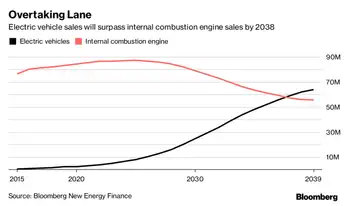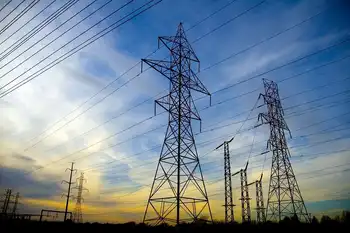Homeowners on hook for break to industry
By Toronto Star
Substation Relay Protection Training
Our customized live online or in‑person group training can be delivered to your staff at your location.

- Live Online
- 12 hours Instructor-led
- Group Training Available
The move extends time-of-use pricing now in effect for homeowners — allowing them to use electricity cheaper at off-peak times, such as nights and weekends — to major firms like Ford, Vale Inco, and Imperial Oil.
It will give big power-consuming sectors an incentive to conserve energy, cut their costs and, the government hopes, keep manufacturing, mining and refining jobs in Ontario.
“We’ve basically been overpaying,” Adam White of the Association of Major Power Consumers of Ontario said.
“Large users who buy power at off-peak times are subsidizing everyone else.”
Liberal sources say ministers signed off on the change two weeks ago, but it has yet to be formally announced.
ThatÂ’s because the government is trying to devise a way of selling the scheme to a public already wary of rising electricity prices due to the new 13 per cent harmonized sales tax and various green energy fees.
The policy shift means the electricity system will have to make up the difference in what big power users were paying by collecting it from all other customers — including millions of homeowners, thousands of businesses, along with hospitals, schools, municipalities and universities.
Sources said that change would increase the price of power by between $1.50 and $4 per megawatt hour each year. For the average homeowner that’s a hike ranging from $18 to $48 annually under something called the “global adjustment mechanism” in monthly hydro bills.
Government officials insisted that “we’re talking a neutral impact here for residential and commercial users, which in exact terms means a less than one per cent variation in the short term up or down.”
“And in the medium and long term it would provide savings to all types of users,” said an official.
The global adjustment is a method for charging electricity users money over and above the direct cost of the power they consume. The global adjustment covers the investments made in electricity generating facilities and rises every year. Under the change, about 7 per cent of the adjustment shifts from major industrial consumers to other businesses and homeowners.
Depending on your local utility, the global adjustment is either buried in the tally on hydro bills or listed as a separate line item. As of June 2010, the global adjustment fund sat at $4.6 billion.
“There’s been some sensitivity to the cost,” acknowledged White, whose organization representing more than 40 of the largest electricity consumers has been pushing for the new policy for years.
“I’ve been in to see four different ministers of energy on this over time.”
White said the existing industrial rate structure is “punitive” to major customers because it is two-thirds based on the average cost of producing electricity in Ontario, and one-third on the floating market price — even though most industries are operating during evenings and other off-peak times.
“We’ve got to have policies to encourage customers to use less and large industrial users are ready,” he added.
Companies can save money on power by delaying production shifts, for example, on hot summer days when the price of electricity is highest, and making up production at other times. That means less stress on an electricity grid also powering homes, institutions, and businesses across the province.
Energy and Infrastructure Minister Brad Duguid has argued that the measure would increase conservation by encouraging major power users to run factories, mines, refineries, and mills when demand is lower.
“Shifting usage to off-peak times helps to reduce costs to the system benefitting all users, because it avoids additional costs incurred by building new generation power stations,” said one government official.
“Conservation is also important in helping us phase out coal usage, which runs on peak time,” said the official, referring to the 2014 date when Ontario’s last smog-producing coal-fired plant at Nanticoke shuts down.
But some Liberal strategists are worried about the political cost of increasing hydro bills yet again with an election looming in October 2011.
“I don’t understand the politics of this,” said one Grit, noting the government has already given businesses corporate income tax cuts as well as the HST to streamline their costs.
Just recently, the government did another U-turn on its controversial “microFIT” program to buy solar power from small producers with panels in their fields.
The solar subsidy, which Duguid had cut 27 per cent on July 2 because it would have cost electricity ratepayers an extra $1 billion over 20 years, was essentially restored for all applications received by that date.
That capitulation followed an outcry from farmers who threatened to defeat more than a dozen rural Liberal MPPs in the next election.











